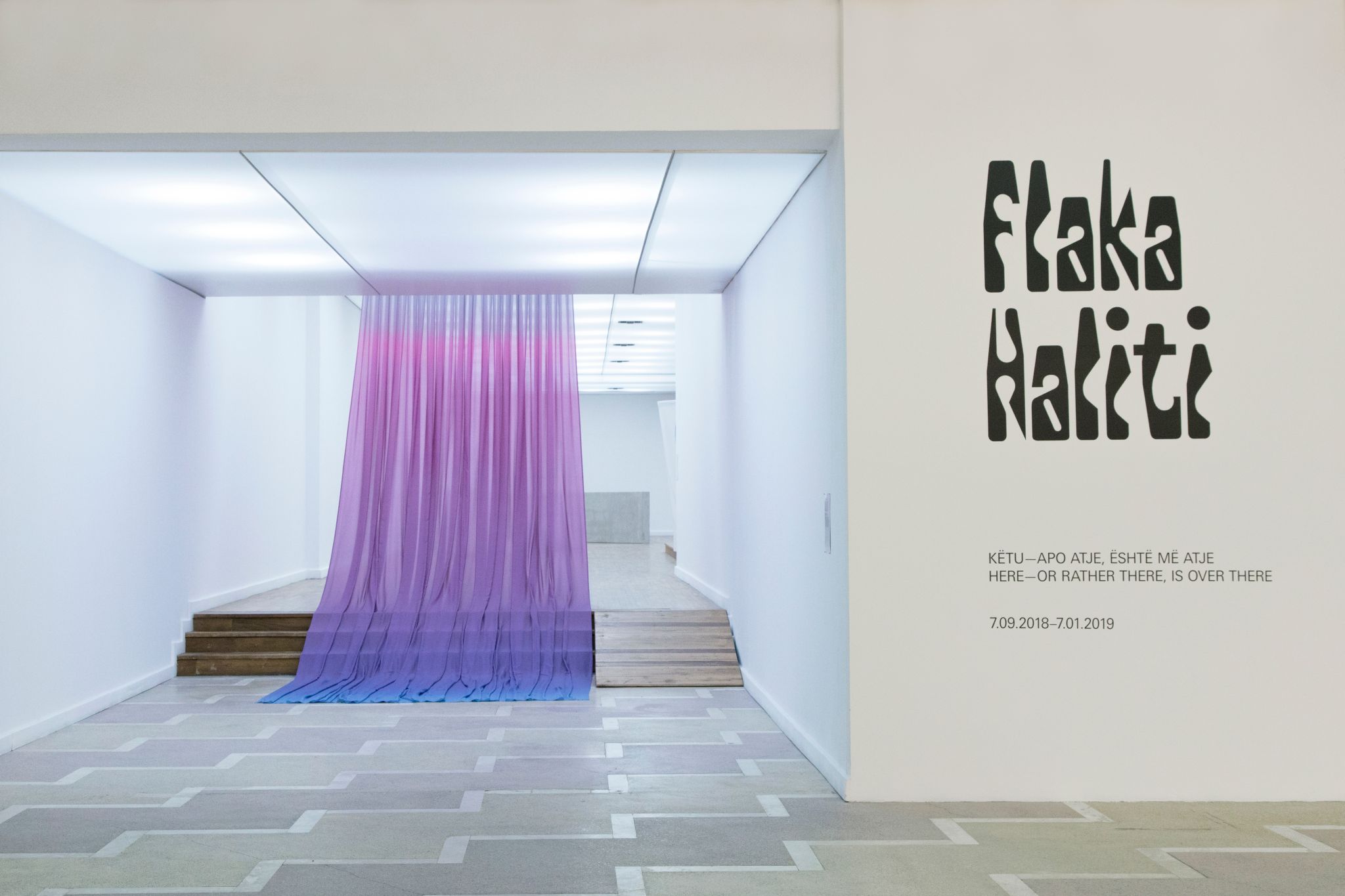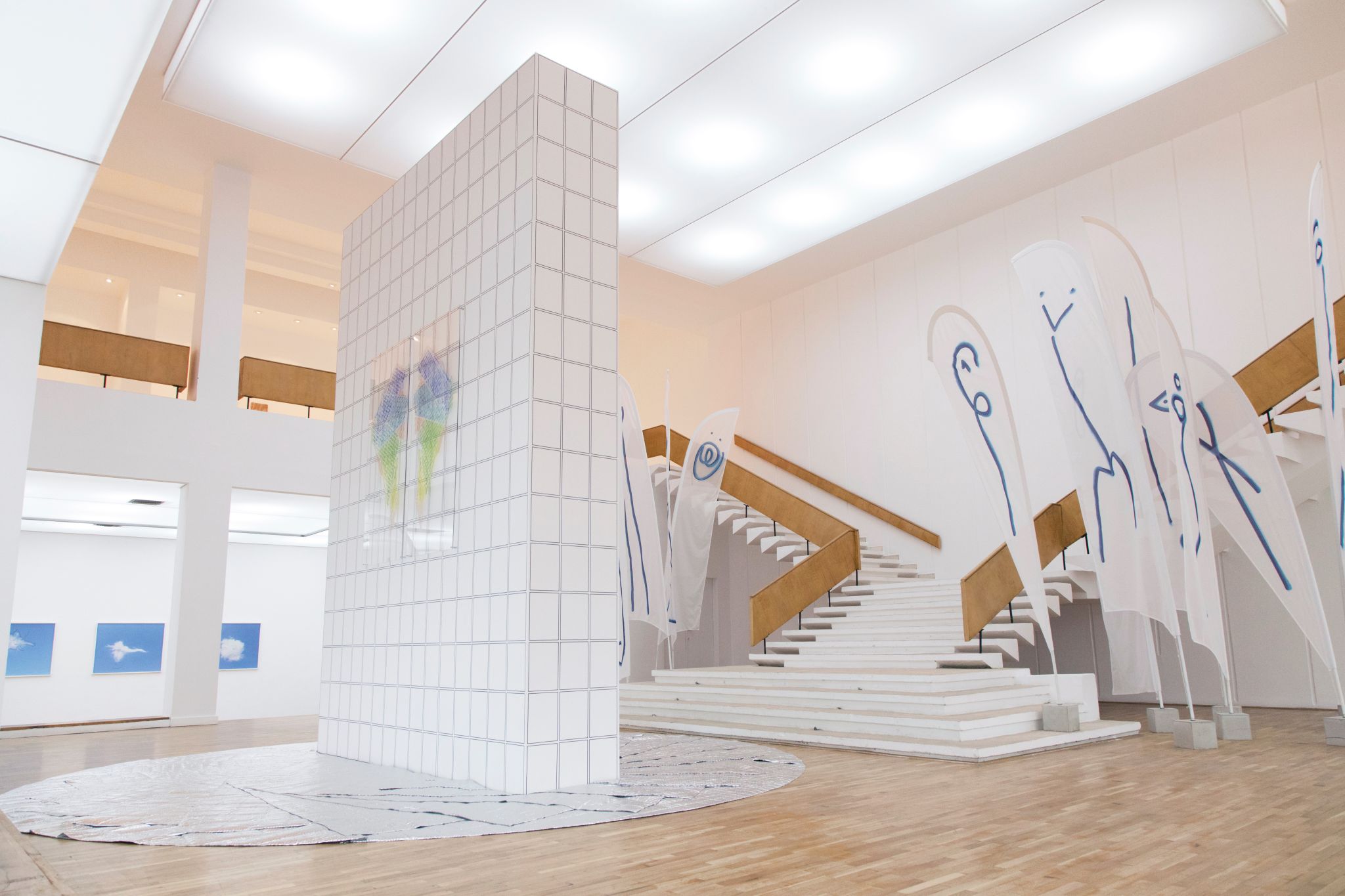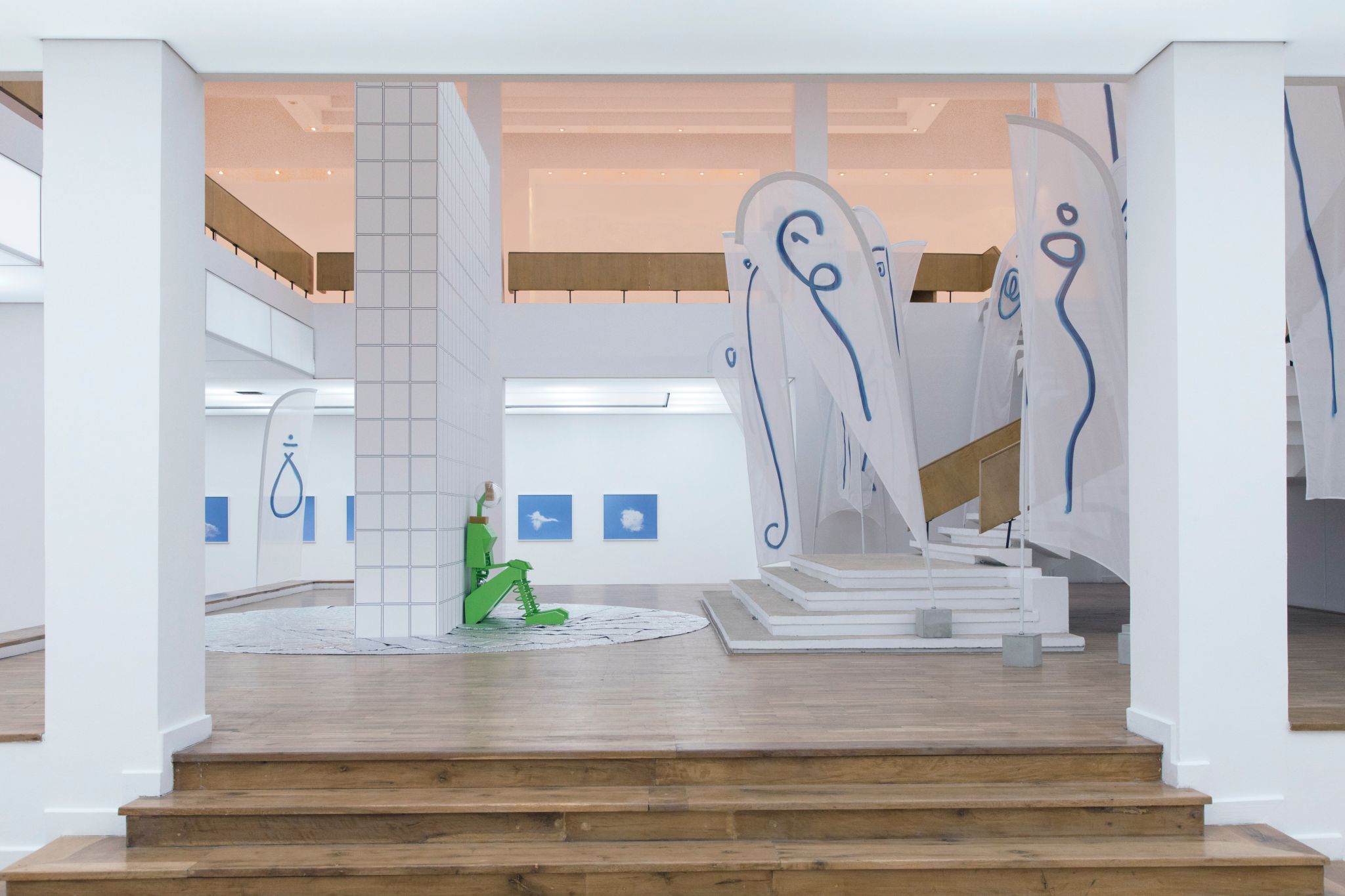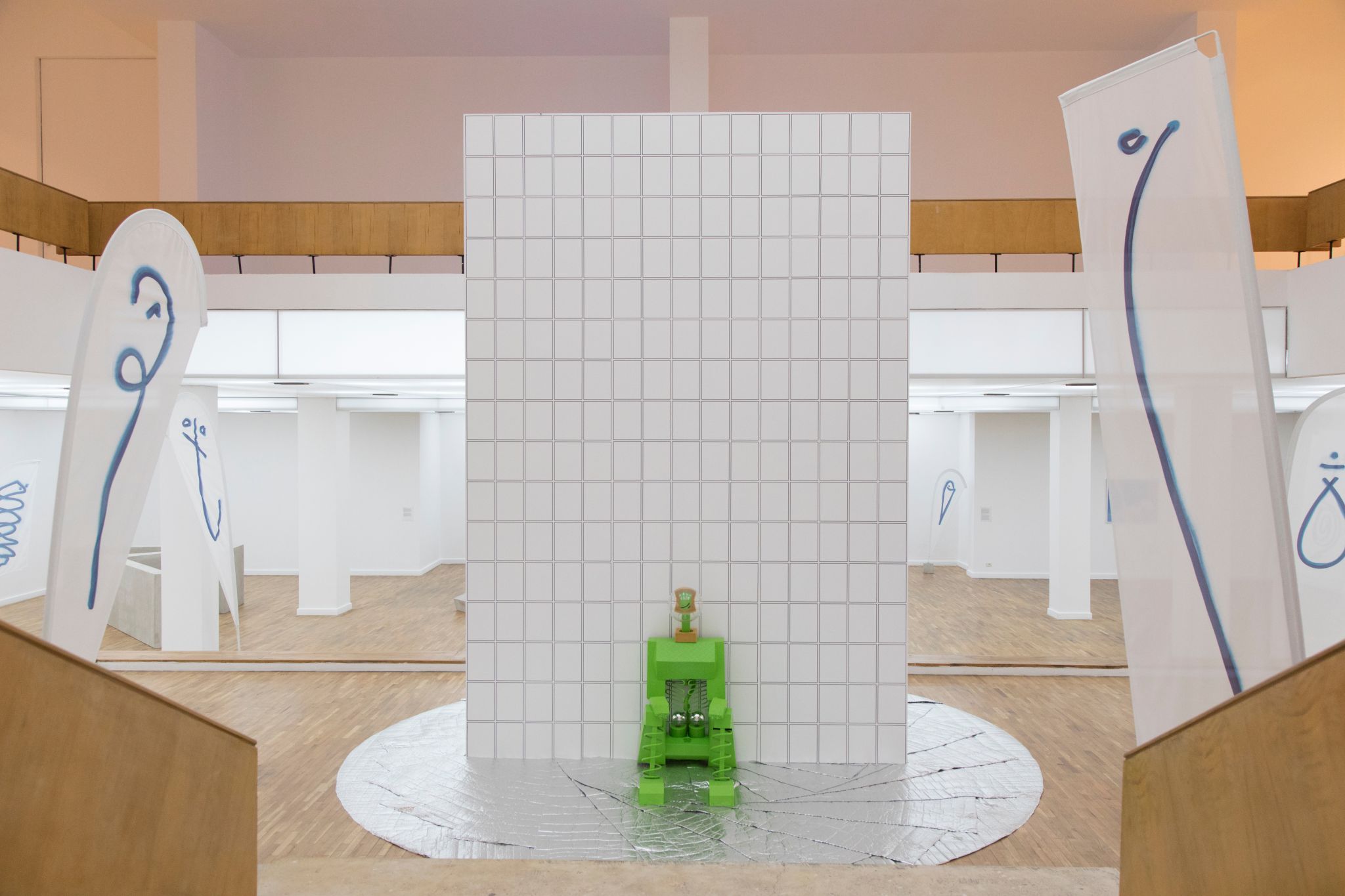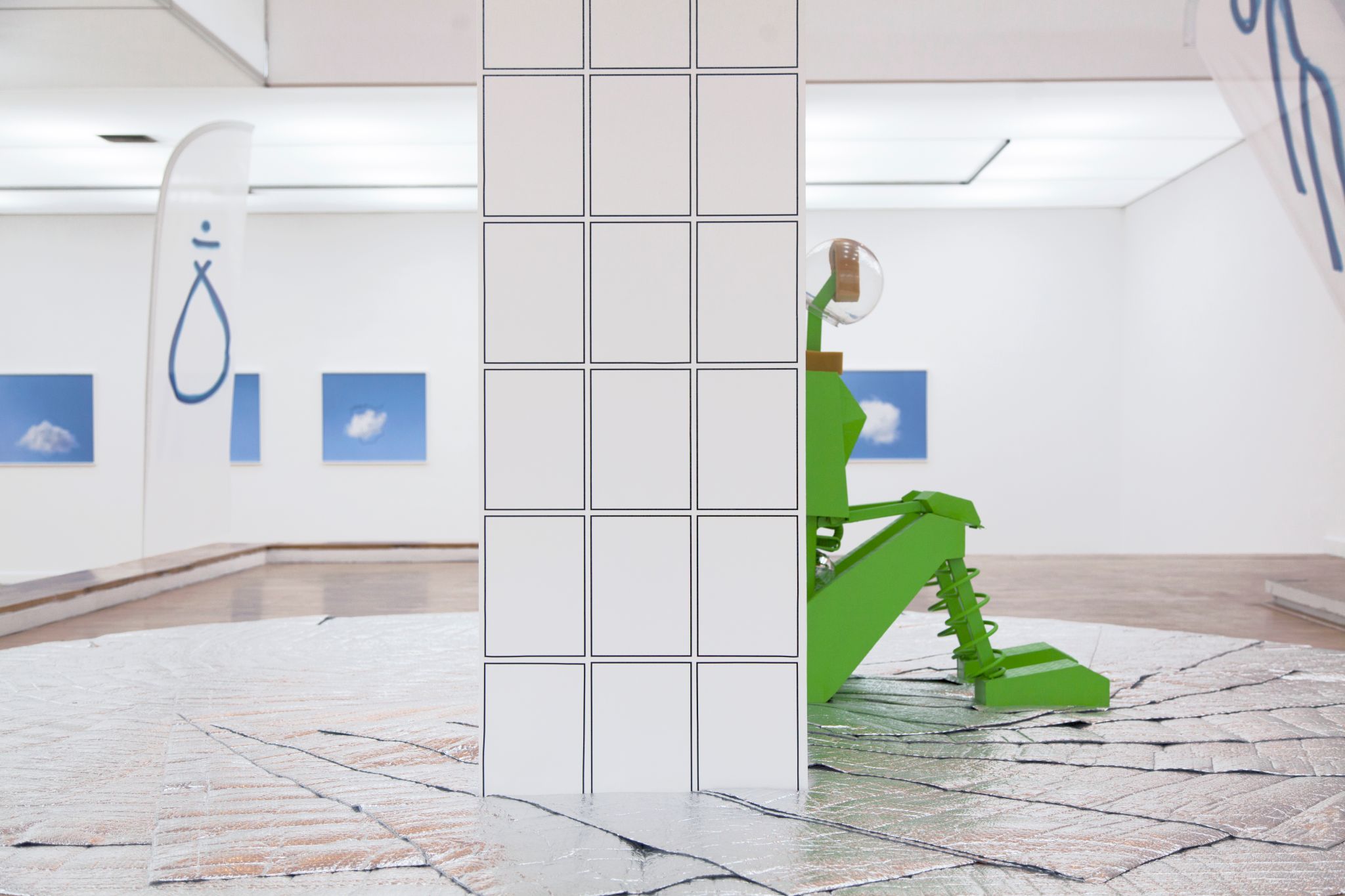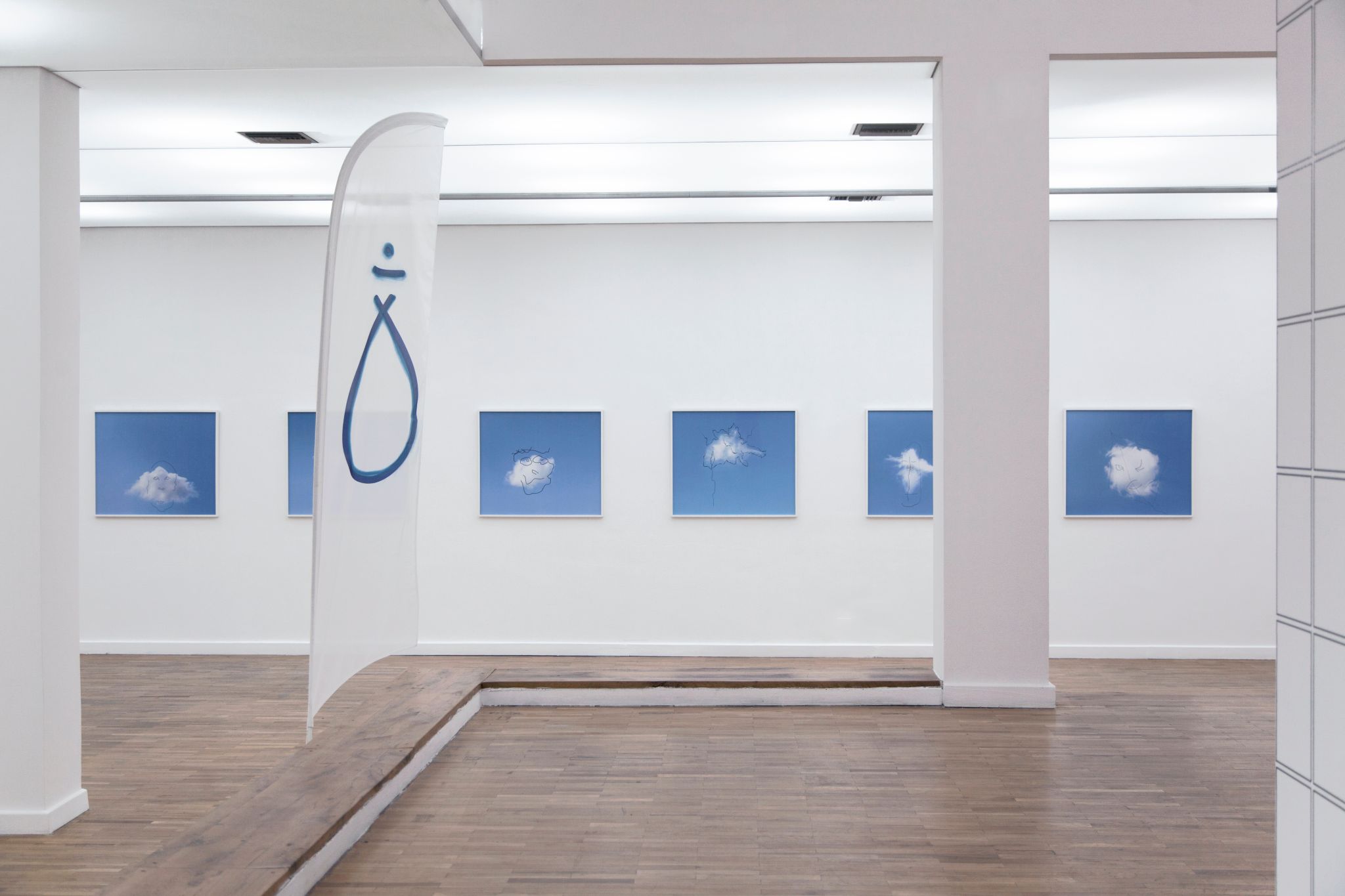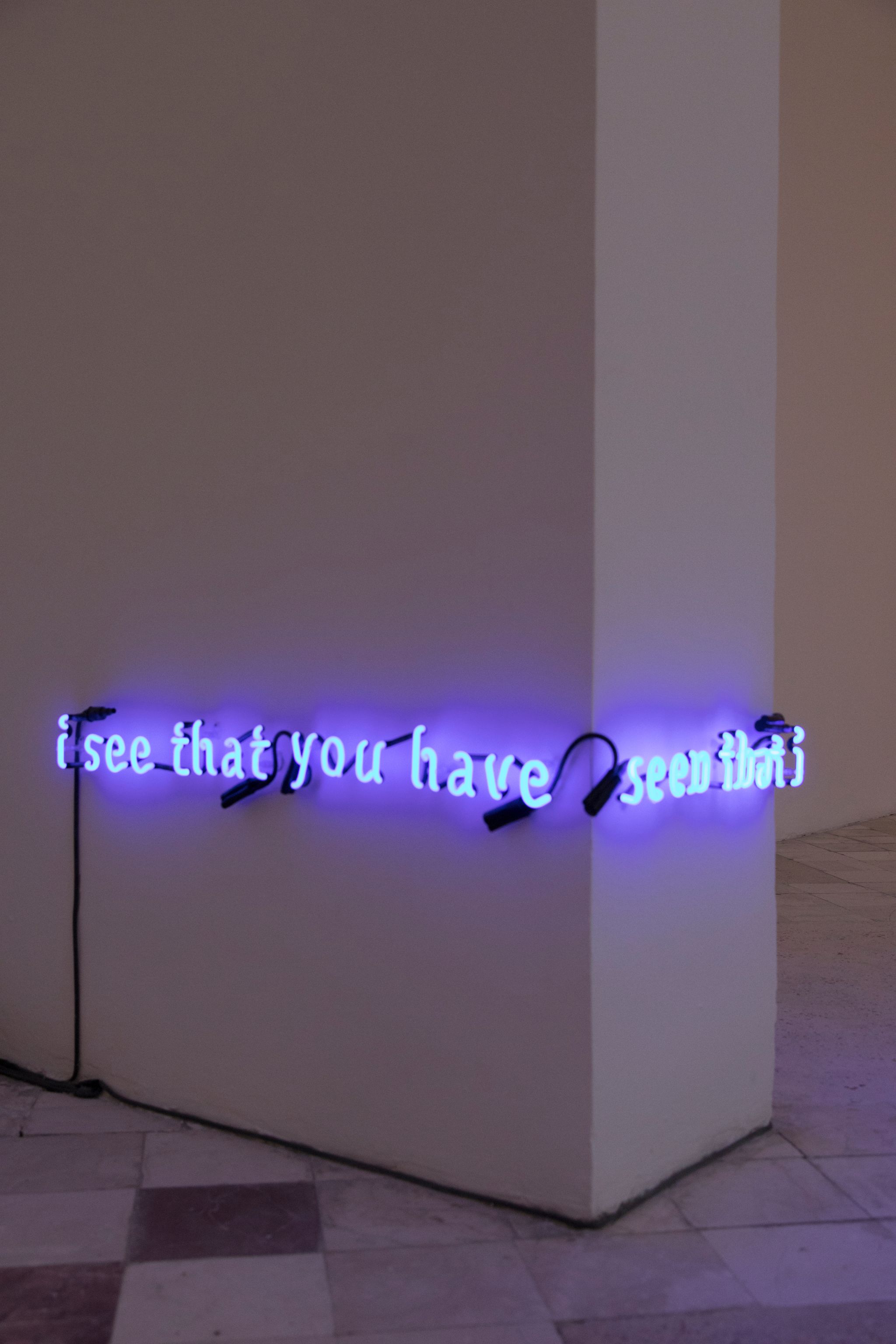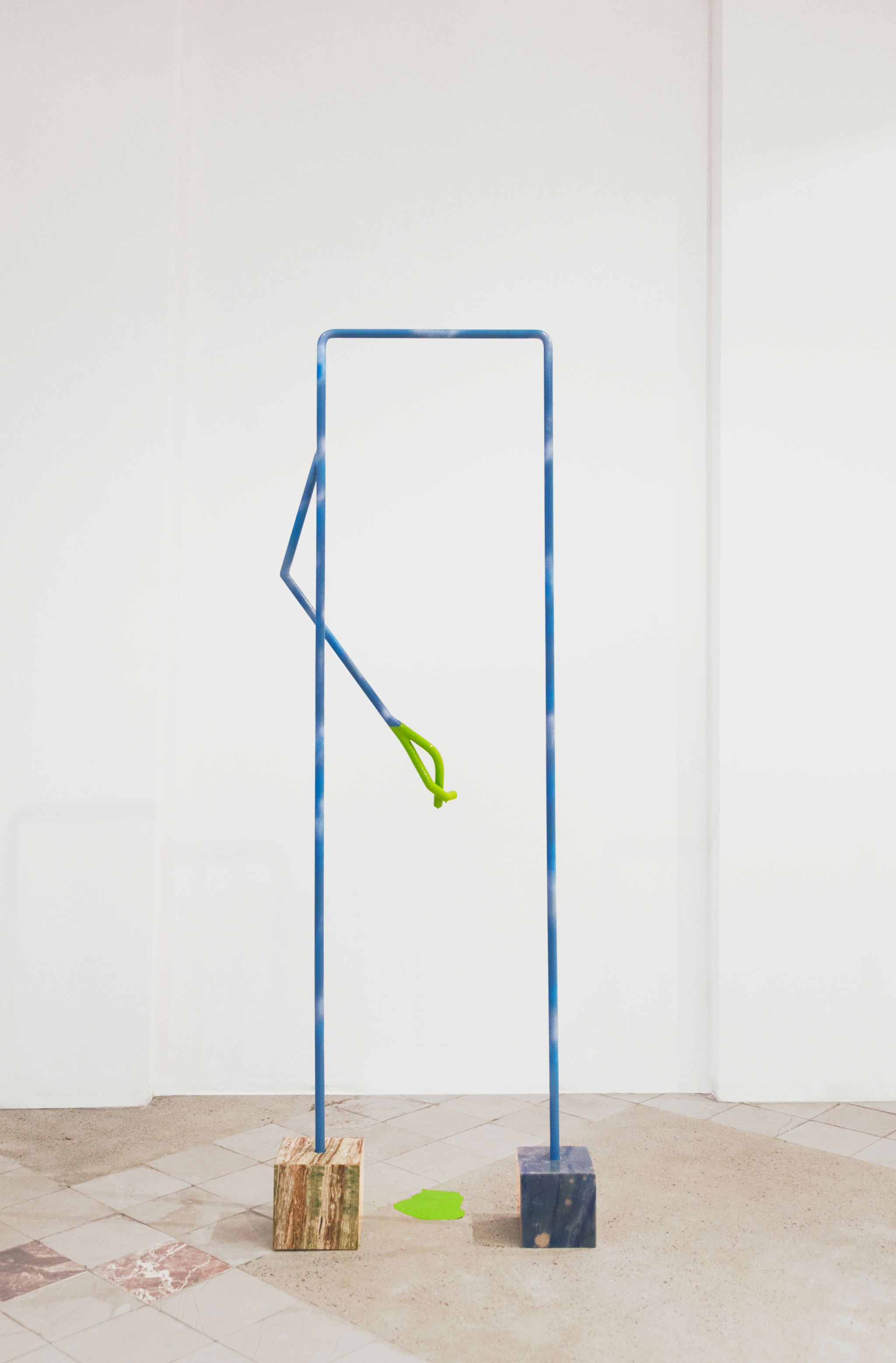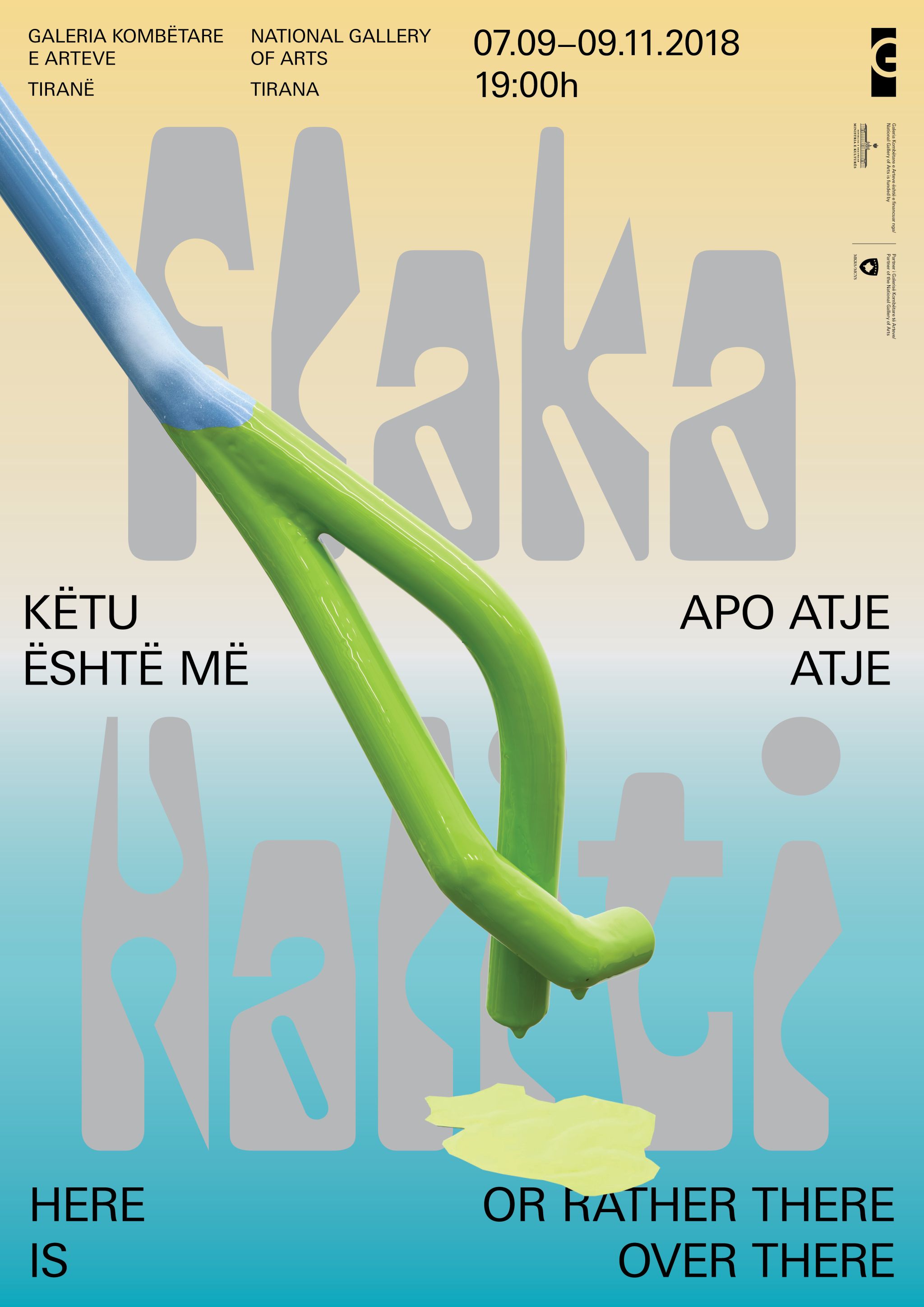The name itself “Here – or rather there, is over there” brings to mind the issue of borders, not just geographic ones. At the opening of the exhibition, NAG Director Erzen Shkololli expressed his delight about the possibility of increased artistic cooperation between Albania and Kosovo. The exhibition takes upon itself to reach out to new ideas and spaces through multiple explorations. The one thing Flaka Haliti remains faithful to through out the jurney of this exhibition is the opposition of boundaries.
read more
We can easily think that the “biggest obstacles” are in fact not such at all, on the contrary. Seeking for another path is the way forward therefore stoppage doesn’t need to be the only consequesnce for obstruction. According to the curatorial text, based on earlier events in Kosovo, Haliti uses international aesthetics of protective walls to turn these mute blocks into animated objects that advocate new ways of moving through an unstructured space.The artist, Haliti, requires different ways to connect with the spectator or reader of her work. At the entrance, a curtain, almost translucent, which physically blocks the entry but also allows looking through, constitutes the first work at the exhibition titled “Rri varur kot #2”. Due to its silky composition (three) colors and its placement (somewhere central ), the curtain fluctuates between futility and obstruction, despite this it requires attention with persistence as well.
The marking of a certain array (flag) apears singly (individualized) in Haliti’s exhibition: 25 white flags in different forms, in which irregular lines resemble human or animal silhouettes, are included in the work titled “E shqetësume prej fantazmës pa u brengosë” (“Concerned by the Ghost Without Being Bothered”). Even this work is noticable for its transparency and brittleness in spite of the concrete foundation, which promises the stability of every flag. All this creates the impression of an organic coexistence of extreme features the sense of obstruction, disencumber, and astonishment too, is created as the visitor is faced with the work titled “Pa Titull” (“Untitled”); the four-piece plastered wood leaves the impression of concrete, when it is far from it. Their strength and immobility, in fact, are merely optical illusions.
“I see a face. Do you see a face?” resembles a wordplay. As you see the whole ten works (digital pictures lined above them), they resemble childish fantasy games where natural phenomena are enlivened and breathe. In this work, clouds are outlined with portraits that carry a variety of expressiveness: characters and feelings.
Considerable spaces are occupied by other installations on display such as the green robot or series about Joe: The robot created from the remains of an abandoned camp, used earlier by KFOR soldiers during the NATO peacekeeping mission in Kosovo, delivers the next work titled “Urgjenca e vet humbi në kthim mbrapa (duke mbetur gjithmonë me vonesë)” Its Urgency Got Lost in Reverse (While Being in Constant Delaly)”. This is a multilayered installation; an incarnation of something between an angel of history and an artificial intelligence messenger from the future.
A whole set of anthropomorphic compositions under the title “A je ti, Joe” – “Is It You, Joe”?, combines two completely different substances in their composition: marble and sponge. It remains unclear who Joe is and yet he is somebody’s portrait (in sponge), who surprisingly holds tight onto an almost impossible surface (marble). The curatorial text itself connects the sponge to the absorption of many experiences whereas the marble is seen as symbol of art history.
The exhibition in Tirana was curated by Leonie Radine.
Text: National Gallery, Tirana
Photos: National Gallery, Tirana
